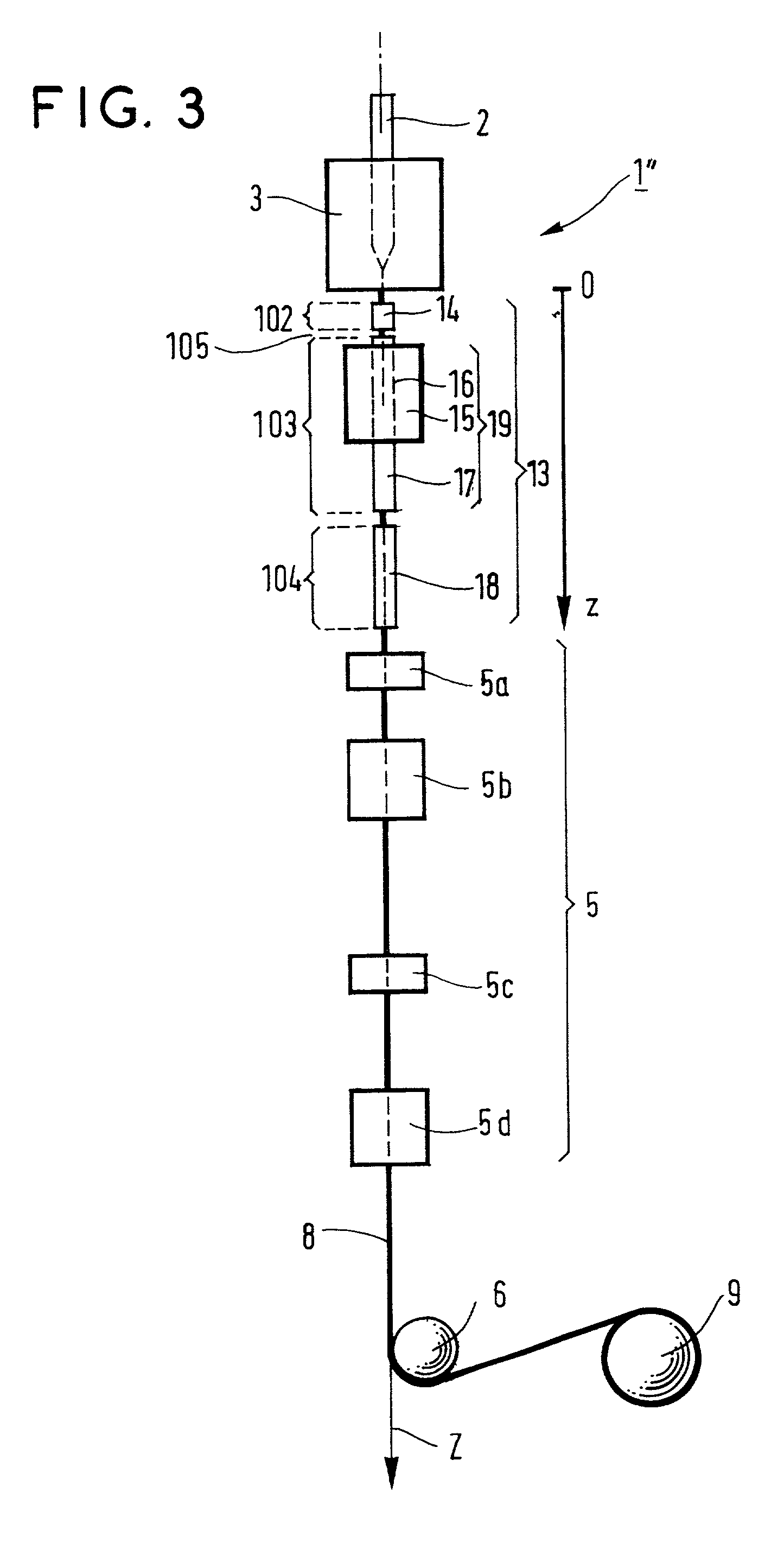Method of cooling an optical fiber while it is being drawn
a cooling method and optical fiber technology, applied in the field of cooling an optical fiber while it is being drawn, can solve the problems of eccentricity of the fiber in the coating and with the quality of the coating, and achieve the effects of reducing the attenuation of the fiber, improving the cooling effect of the optical fiber, and reducing the scattering of rayleigh back
- Summary
- Abstract
- Description
- Claims
- Application Information
AI Technical Summary
Benefits of technology
Problems solved by technology
Method used
Image
Examples
example
[0037] A cooling device 13 for implementing the invention like that shown in FIG. 3 was used on a drawing tower 1" which was of the type shown in FIG. 3 except that the tube 18 was omitted. The coated fiber made in said tower 1" was a standard silica-based fiber conforming to the G.652 standard.
[0038] The tube 14 was 25 cm long and its wall was maintained at a temperature of 15.degree. C. by heat exchange with a heat-exchange fluid, which was water in this example. The tube was 9 cm below the drawing furnace. The tube 14 defined a fast cooling area 102 in accordance with the invention, also referred to as the quenching area 102. A cooling fluid in the form of gaseous helium flowed inside the tube. The helium flowrate was adjustable to vary the temperature of the fiber on leaving said tube 14. In this example, said flowrate was fixed at 1 liter per minute (l / min) and the temperature of the fiber in the intermediate temperature area 105 was then 1500.degree. C.
[0039] The slow cooling ...
PUM
| Property | Measurement | Unit |
|---|---|---|
| Angle | aaaaa | aaaaa |
| Angle | aaaaa | aaaaa |
| Angle | aaaaa | aaaaa |
Abstract
Description
Claims
Application Information
 Login to View More
Login to View More - R&D
- Intellectual Property
- Life Sciences
- Materials
- Tech Scout
- Unparalleled Data Quality
- Higher Quality Content
- 60% Fewer Hallucinations
Browse by: Latest US Patents, China's latest patents, Technical Efficacy Thesaurus, Application Domain, Technology Topic, Popular Technical Reports.
© 2025 PatSnap. All rights reserved.Legal|Privacy policy|Modern Slavery Act Transparency Statement|Sitemap|About US| Contact US: help@patsnap.com



